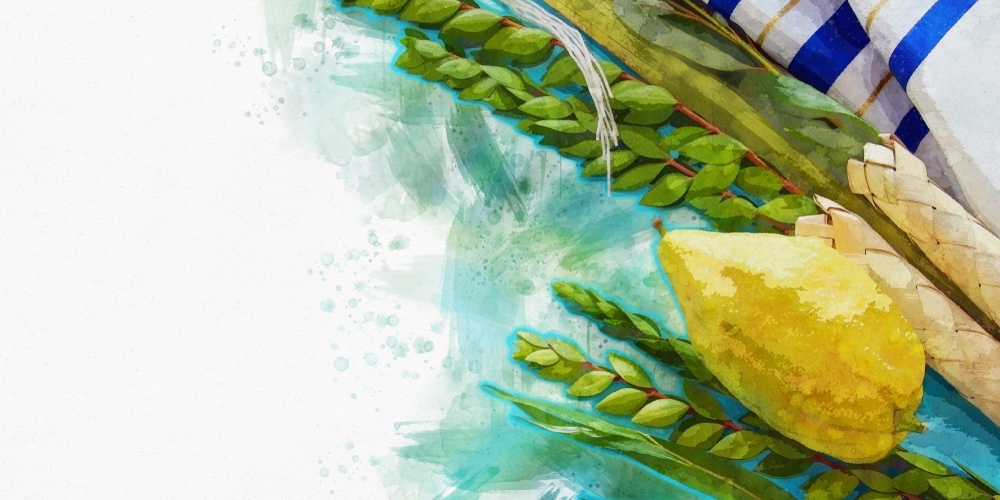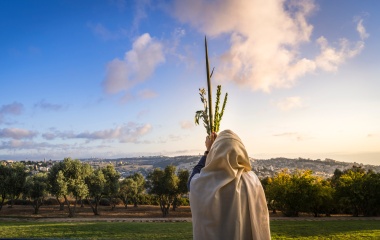
The Jewish year begins with the aseret yemei teshuva, the ten days of repentance. They begin with the strict justice of Rosh Hashanah, Yom Hadin; and culminate on Yom Kippur, with its unique opportunity for forgiveness. The intensity of these days is reflected in our liturgy, our special customs, and in Jewish law, where certain stringencies are recommended only during these ten days. The unique nature of the “High Holy Days” is recognized even by those otherwise very far removed from Jewish observance.
With the blowing of the shofar at the conclusion of Neilah, our reflective mood changes as the Yamim Noraim, "the awesome days" of Rosh Hashanah and Yom Kippur, give way to z’man simchateinu, "the time of our rejoicing", the joyous festival of Sukkoth. This is immediately followed by the even more celebratory festivals of Shmini Atzeret, and (since the Middle Ages) Simchat Torah.
Yet the Rambam, in his codification of Jewish law, combines the section detailing the laws of shofar with the laws of Sukkoth and lulav, reserving his explanation of the laws of Yom Kippur for its own separate section. Clearly, this is no accident: Maimonides’ precise system of codification is a marvel to behold, and stimulates more exacting analysis. While the Rambam also combines the laws of Purim and Chanukah, in that case, the reason is clear: both holidays are rabbinic in nature and derive their force of law from the general obligation to listen to the words of our Sages.
The mitzvoth of shofar and lulav are unique in that they are optimally performed not as separate mitzvoth, but as part of, and in the middle of, our davening; shofar during the mussaf amidah, and lulav during Hallel. It is for this reason that most halachic scholars rule that one should not wave the lulav at home before going to shul, but rather wait until the recitation of Hallel. Similarly, some medieval authorities maintained that one who will be staying in shul to the end of davening should have in mind to fulfil his obligation to hear the shofar during the mussaf amidah itself, and not during the blowing before mussaf (the introductory shofar blowing having been instituted for those who could only attend shul for a few minutes).
Rav Soloveitchik often, and at great length, developed the theme that the shofar is a form of prayer, a prayer without words. Almost incoherently, we cry out to G-d, having exhausted our vocabulary. Thus, it stands to reason that the shaking of the lulav is a non-verbal song of praise as we thank G-d for His many blessings. "And where did they wave (the lulav)? At ‘Give thanks to G-d for He is good, His kindness endures forever’" (Mishna Sukkah 3:9).
One can acknowledge G-d through fear and trembling or through song and praise. The shofar heralds G-d's judgment of mankind, evoking a sense of fear and trembling in us, lest we be found wanting. Yet, the acknowledgment of G-d as our compassionate judge—as One who, despite the logical impossibility of undoing the past, accepts our sincere teshuva—is a most comforting and joyous concept. We wave our lulavim not in fear, but in joy "To the One to whom the heaven and the earth are His" (Sukkah 37b), singing "Hodu laShem ki tov ki leolam chasdo, Give thanks to G-d for He is good, His kindness endures forever".
Of course, it is possible to get too carried away in our joy, relegating the awesome days of Rosh Hashanah and Yom Kippur to nothing but a distant memory. Therefore, it is precisely at the time we are celebrating our blessings that we must leave our protective, secure home, and live in our flimsy sukkah, without even a roof over our heads. Life, like the sukkah, is temporary and transient; and we look to G-d above to protect us as we acknowledge the fleeting nature of man.
This concept of fear and uncertainty, beginning on Rosh Hashanah and finding an echo in the sukkah, is also repeated in our "second waving" of the lulav, at "Please G-d save us now". We wave the lulav not only to acknowledge G-d's mastery over the world, but as the Talmud notes, "to protect ourselves from the bad winds and bad rains" that are part of nature. The lulav thus takes on the role of the shofar as we beseech G-d to let us conquer nature.
We acknowledge G-d in many ways. Some merit teshuva m'Yiraah, repentance based on fear; they need the haunting sound of shofar, to wake them from their spiritual lethargy. Others are able to attain teshuva m'Ahava, repentance based on love, as they come closer to G-d through praise and song. How beautiful is the sound of the shofar when it leads to the waving of the lulav!
Let us merit hearing the sounding of the shofar, heralding the messianic era, where G-d will spread "the sukkah of peace on us, on all the people of Israel, and upon Jerusalem”.



